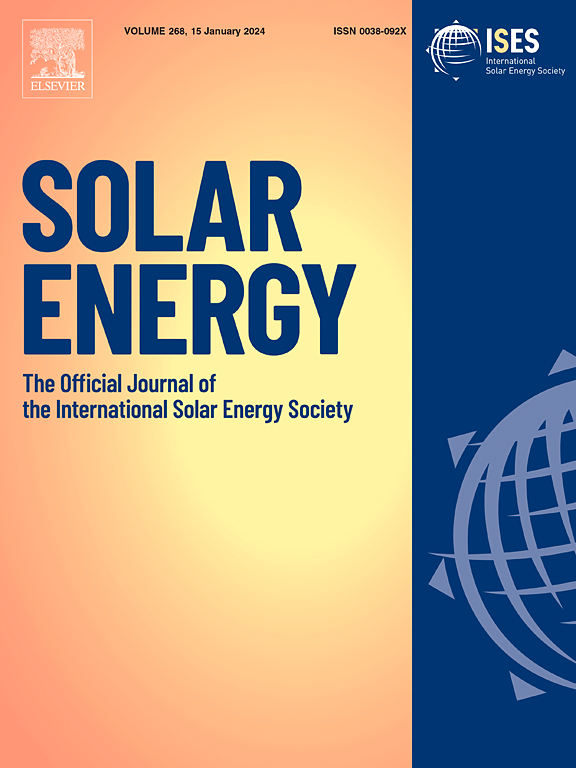Insights into the solar spectrally selective absorption performance of anodic alumina photonic crystal films electrodeposited with cobalt and silver: Silver content dependence and the mechanisms
IF 6
2区 工程技术
Q2 ENERGY & FUELS
引用次数: 0
Abstract
Degradation of performance at elevated temperatures is a common challenge encountered by anodic alumina solar spectrally selective absorption films. In this work, anodic alumina photonic crystal films sequentially electrodeposited with Co and Ag nano-particles were prepared. The photonic crystal structure of the anodic alumina part and the nano-particle morphology of the electrodeposited metals were characterized. The solar spectrally selective absorption properties of the films were investigated with respect to the electrodeposition time of Ag and thermal annealing history of the films. Moreover, the surface chemical states of the Co and Ag in these films were examined by X-ray photoelectron spectroscopy. The contents of the Ag electrodeposited into the films were increased approximately linearly with prolonging its electrodeposition time until 250 s and then leveled off. The properties of the films were moderately improved with increasing Ag content, while the degradation of the properties incurred by thermal annealing was substantially alleviated. Various species on the surface of the Co in the films with different thermal annealing histories were identified and quantified, with respect to which the Ag content dependence of the solar spectrally selective absorption performance of these films was explicated. The optimal Ag electrodeposition time was ascertained to be 250 s, corresponding to an Ag content of ∼ 0.25 mg/cm2, by balancing the performance of the films and efficiency of the preparation process. The values of spectral selectivity of the resulting film were 7.75 and 5.80 before and after being annealed at 300 °C in air for 24 h, respectively.

求助全文
约1分钟内获得全文
求助全文
来源期刊

Solar Energy
工程技术-能源与燃料
CiteScore
13.90
自引率
9.00%
发文量
0
审稿时长
47 days
期刊介绍:
Solar Energy welcomes manuscripts presenting information not previously published in journals on any aspect of solar energy research, development, application, measurement or policy. The term "solar energy" in this context includes the indirect uses such as wind energy and biomass
 求助内容:
求助内容: 应助结果提醒方式:
应助结果提醒方式:


